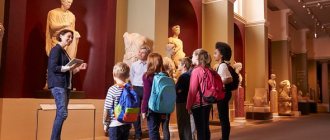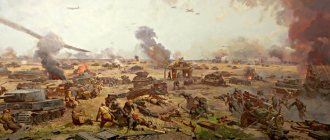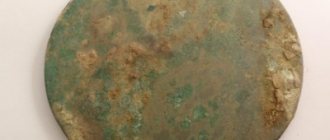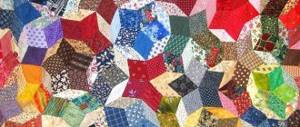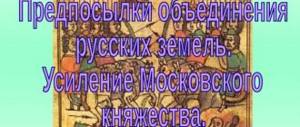Download material
so UNT / Lesson developments / Lessons on World History
Synopsis for the World History lesson “Ancient China”
02/22/2015 2668 519 Tanybaev Asylbek Kairgeldynovich Takyryp: “Ancient China” Maksat: 1. Educational: a) form an idea of Ancient China b) continue to systematize the idea of the influence of natural factors on the economic activities of people 2. Developmental: a) continue the formation of work skills with a map, the ability to highlight the main thing from general information b) to promote the development of figurative and logical thinking, visual and auditory memory 3. Educational: a) to arouse in students a feeling of joy of learning, interest in the achievements and spiritual values of the ancient Chinese b) to awaken in them respect and desire to take care of the history of other peoples Sabak Barysy: I Ұyimdastyru kezenі II Үй zhumysyn tekseru: oral survey III Zhana takyryp: You and I have already studied many countries. Let's remember and show them on the map (students name and show Egypt, Palestine, Phenicia, Assyria, Persia, India) And now we will begin to study a new country, and which one, I think you can now guess. I have several items in my hands. -What is this? (compass!) What is it for? (for orientation) - And this? (paper!) For what? (for notes!) - This is what's left. 3. Large rivers 4. 221 BC. 5. Qin Shihuangdi 6. Economy
2. Work with words: • The Great Wall of China • The Great Silk Road 3. Work on the map
II level 1. tests. 1.The main branch of China's economy was: A) Cattle breeding. Agriculture. C) Construction of temples. Construction of dams and canals. E) Winemaking. 2. In China, since ancient times, the production of: A) Gunpowder has been developed. Papers. C) Silk. D) Porcelain. E) Cotton. 3.The basis of Chinese society was: A) Private ownership of livestock. Private ownership of land. C) Caste system. D) Family. E) Devotion to the emperor. 4.At the end of the 2nd century. AD in China began: A) The Red Turban uprising. Construction of the Great Wall of China. C) Construction of a palace for Emperor Wang Mang. D) The uprising of the “red brows”. E) The uprising of the “yellow scarves”. 5. The genius of ancient China is called: A) Confucius. Sima-Qian. C) Zhahama. E) Lao Tzu. 6. “Historical Notes” in ancient China was written by: A) Lao Tzu. B) Sima-Qian. D) Confucius. E) Zhang. 7. In China, something was invented that is very widely used in schools and universities: A) Seismograph. Compass. C) Paper. D) Gunpowder. E) Star maps. 8. Years of life of the famous Chinese philosopher Confucius: A) 551-479 BC. e. 552-479 BC C)553 - 478 BC e. D) 554-478 BC. E) 555-478 BC. 9. The emergence of Chinese civilization in the Yellow River basin: A) 3-2 thousand BC. e.B) 2-1 thousand BC C) 2 thousand BC D) 1 thousand BC E) 1 thousand AD 10. The first emperor of China: A) Wang ManB) Fan Chun C) Sima-Qian D) Confucius. E) Qin Shi Huang
2. Fill out the diagram level III. This is evidenced by the following material historical source: “Many graves of the 2nd millennium BC were found on the banks of the Yellow River. Some of them are small, in which lay a body wrapped in matting and a pot of food. In other spacious graves, next to the deceased, there were many golden things, expensive vessels, as well as servants, horses, dogs”? What conclusions can you draw from archaeological excavations?
IV Sabakty bekitu: Yes or No Do you believe that tea is grown on all continents? (Yes, on all continents, on islands in 40 countries). Do you believe that tea with lemon or tea with berries is a Japanese invention? (No, the British call this tea Russian tea). For a long time, the Romans believed that silk grew on trees, in a country whose people the Romans called Seres. Do you believe this? (We can say that yes, because the silkworm feeds on the leaves of the mulberry tree and spins a cocoon, from which the Chinese learned to extract silk thread). Show cocoon and natural silk. Do you believe that the route along which goods came from China was called the Great Tea Route? (No. The Great Silk Road. It passed from oasis to oasis, through the Taklamakan desert to the city of Kashgar, then crossed the Pamirs, led to Persia and further to the West). Do you believe that the wall protected it all along? (No. The Great Wall of China was founded under Qin Shi Huangdi in 214 BC and protected only part of the Silk Road through Northwest China). Do you believe that the Chinese did not make flower soup? (No, they did. The poet Lu Zu from the south of China recalled: There, thousands of miles away, they prepare soup from mallow leaves (this Chinese expression is a metaphor for expressing nostalgia). Do you believe that the Chinese ate tea and did not drink it? (Yes , from the 1st to the 3rd centuries it was a medicine and soup was made from it, and in the 5th century they began to cook porridge and called it tea porridge.) Do you believe that the Chinese had their own special ancient “chewing gum”? (Yes, they chewed betel – leaves and fruit of the walnut palm) Do you believe that the Chinese in the Middle Ages did not know or use chairs? (No, they did know and use them, they called them “barbarian seats”). Do you believe that the first restaurants appeared in China in the 12th century? (Yes, in Koifeng in 1153) Do you believe that the oldest noodles were cooked in China? (Yes, in the 1st century AD). Do you believe that the Chinese deified the constellation Ursa Major? (Yes, the spirit of the Big Dipper is mentioned - Beidou in Chinese mythology).Do you believe that the Russians officially established contact with China in the 17th century? (Yes, the Russian embassy was sent in 1654, it was headed by F.I. Baykov). Do you believe that the partisans could defeat the 500,000-strong Chinese army? (Yes, this happened in Vietnam in 1284. Kublai Khan led an army, and the guerrillas of Throne Himg Dao destroyed it). Do you believe that the first paper money appeared in China? (Yes, in the Qin Empire in 1152). “Red Eyebrows”, “Yellow Bandages” - are these the names of modern musical groups? (no, this is the name of the uprisings in China). Do you believe that the people of Irkutsk were in China in the 17th century? (Yes, Nikolai Spafariy 1675-78). Do you believe that fireworks are not a Chinese invention? (No, Chinese. First used in China in the 5th century). Do you believe that chess was invented in China? (No, in India). Do you believe that appearing in public in China without a headdress meant publicly admitting to committing a crime? (Yes, this was the case in the Han era, and shaving the head was a shameful punishment for those sentenced to hard labor).
V Sabakty korytyndylau VI yige tapmyrma beru: ∫19 learn 1. Location of China 2. Time of formation 3. Large rivers 4. 221 BC. 5. Qin Shihuangdi 6. Economy
See the downloadable file for the full text of the material.
The page contains only a fragment of the material.
Ancient China - the cradle of Far Eastern civilizations, presentation 5th grade
Natural and climatic conditions for the formation of the civilization of Ancient China:
China is located in the extreme East of Asia, separated from other civilizations of the Ancient World by high mountains. The nature of China has not created such comfortable conditions as in the Tigris-Euphrates region, India or Egypt. There are frosty winters and hurricane winds. The soils are not as rich. The Yangtze River, and especially the Yellow River, are prone to catastrophic floods.
China in the 2nd - first half of the 1st millennium BC:
The people of Ancient China traditionally grew rice and tea. The most suitable territory for the existence of people in this region is the Great Chinese Plain, that is, the lower part of the Yellow and Yangtze rivers. In VI
I–VI inhabitants of the Great Chinese Plain mastered iron processing.
With iron axes they liberated vast territories. The presence of plows with iron shares made it possible to develop all these lands. Around this time, a system of irrigation for reclaimed lands was developed. Also, for a long time, the national secret of the Chinese was the production of silk from silkworm cocoons. VI
I-V centuries BC - the time of the emergence of a large number of city-states here, tirelessly at war with each other.
First Chinese Empire:
At the end of the period of continuous wars, all lands were united into a huge single state led by the Qin dynasty. IN 221
BC, the ruler of the Qin dynasty assigned himself the title of emperor, which in Chinese sounds “huangdi”. He is known in history as the “first Qin emperor” - Qin Shi Huang. All land and power in Ancient China came into the possession of the emperor. The territory of the empire was divided into provinces, headed by a high-ranking official. The emperor traveled almost constantly throughout his domains, checking that his orders were carried out. It was because of this that many roads were built between the provinces. Standardization of measures of length and weight was carried out, and a unified monetary system was introduced. Based on innovations, rapid development of trade began.
Despotism of the First Chinese Empire:
If the emperor was angry with a subordinate, he would send him a sword, which meant an order to kill himself. To prevent uprisings and conspiracies, the emperor resettled noble people of the conquered lands to the capital in order to control them. The slightest crime or disobedience was punished by becoming a state slave. The emperor's closest relatives also became slaves. Qin Shi Huang feared for his life. He moved from one palace to another, changing his place to sleep every night. His fears were not in vain - he successfully survived several assassination attempts.
Military companies of the empire:
Qin Shi Huang continuously fought with the rulers surrounding his empire. Military settlements were built in the conquered territories. Those captured were made slaves or executed. But his main problem was protecting the northern borders of the empire from warlike nomadic tribes.
The great Wall of China:
The empire was greatly worried about the raids of the nomadic Huns. To stop their attacks, by order of the emperor, the construction of the huge Great Wall of China began. Its length in different periods ranges from eight to twenty-one thousand kilometers, the width of the upper part and height reaches ten meters. The width of the wall allows it to be used as a road. This wall, with interruptions in certain periods, was built over a period of about 2
thousand years, depleting China's economic and human resources.
Towers were built every two hundred meters, within the distance of an arrow. Within line of sight - about 10
kilometers, signal towers were installed, on which fire was lit when the enemy appeared. The signal was transmitted further by a chain of lights. Similar signaling systems were also used in the Caucasus (Alans and others) and among the Zaporozhye Cossacks. The wall was rebuilt many times, with the strength of the materials increasing, and significant parts of it have survived to this day.
Terracotta Army:
Qin Shi Huang was buried in an underground tomb guarded by six thousand life-size clay warriors. All warriors with a face different from the rest have differences in military branches and ranks. Next to the riders there are their clay horses, also life-size. The builders of the tomb along with their families were buried next to the clay army - about 70
thousands of people.
Han Empire:
The heir to the first emperor did not have the talent to govern, and a few years after he came to power, a strong uprising of the people broke out, as a result of which the laws of the Qin dynasty were abolished, including the freeing of state slaves. The leader of the rebels in one of the provinces was the village headman. After the victory in his province, he gradually subjugated the rest of the territory of Ancient China, becoming the founder of a new dynasty. Power over China fell into the hands of the Han Dynasty for more than four hundred years.
